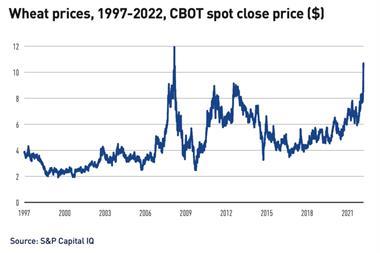The aggregated funding ratio for defined benefit (DB) pension schemes potentially eligible for entry into the UK’s Pension Protection Fund (PPF) increased from 108.4% to 111.4% in March, the highest level it’s been since June 2007, according to new figures from the DB lifeboat fund.
The aggregate surplus of the 5,215 schemes in the PPF 7800 Index is estimated to have increased to £176.4bn (€211bn) at the end of March 2022, from a surplus of £133.6bn at the end of February 2022.
Total assets were £1.7trn and total liabilities were £1.5trn.
There were 1,908 schemes in deficit and 3,307 schemes in surplus. The aggregate deficit of the schemes in deficit at the end of March 2022 was £62.9bn, down from £83.1bn at the end of February.
“Scheme funding levels continue to be impacted by the increase in bond yields which have moved to reflect expectations that the Bank of England’s policy rate will be higher in the coming years than it has for the previous decade,” said Lisa McCrory, PPF’s chief finance officer and chief actuary.
Pension consultancy XPS last week said rising Gilt yields drove down UK pension scheme deficits against long-term funding targets by £61bn over the month to the end of March, with asset values ending the period roughly where they started but volatile throughout.
It has calculated the average funding level of UK pension schemes on a long-term target basis as 87% as of 30 March 2022.
“Gilt yields have reached their highest levels in the last three years due to commodity prices pushing up short term inflation rates,” said Charlotte Jones, senior consultant at XPS.
“This is good news for pension schemes, which should review any de-risking opportunities, secure their liabilities and lock in any reduction in deficits by reducing risk in their investment strategy or taking advantage of the recent improvements in buy-out pricing.”
The development is broadly in line with that in other countries. The average funding ratio of Dutch pension funds jumped by 5 percentage points in March to close to 120%, their highest level in 10 years, according to Aon.
Read the digital edition of IPE’s latest magazine












No comments yet